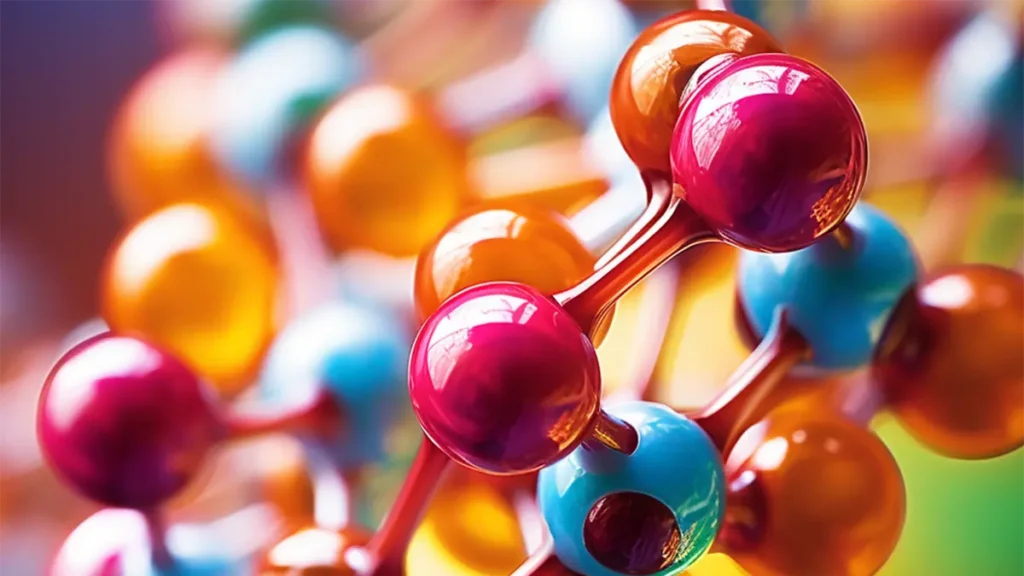The coenzymes or cosubstrates are a small type of organic molecule, non-protein in nature, whose function in the body is to transport specific chemical groups between various enzymes without being part of their structure—for example, coenzyme A, vitamin K, and lipoic acid.

It’s about an activation method that consumes the coenzymes, which are continuously recycled by the metabolism, allowing the perpetuation of the cycle and the exchange of chemical groups with a minimum of chemical and energetic investment.
There is a wide variety of coenzymes, some common to all life forms. Many of them are vitamins or come from them.
Examples of coenzymes
- Nicotinamide adenine dinucleotide (NADH and NAD+). A participant in redox reactions, this coenzyme is found in all living cells, either as NAD+ (created from scratch from tryptophan or aspartic acid), an oxidant and electron acceptor, or as NADH (oxidation reaction product), reducing agent and electron donor.
- Coenzyme A (CoA). Responsible for transferring acyl groups necessary for various metabolic cycles (such as the synthesis and oxidation of fatty acids), it is a free coenzyme derived from vitamin B5. Meat, mushrooms, and egg yolk are foods rich in this vitamin.
- Tetrahydrofolic acid (Coenzyme F). Known as coenzyme F or FH4 and derivative of folic acid (Vitamin B9), it is particularly important in the amino acid synthesis cycle, especially purine, through the transmission of methyl, formyl, methylene, and forming groups. A deficiency of this coenzyme causes anemia.
- Vitamin K. Linked to the blood coagulation factor, it activates different plasmatic proteins and osteocalcins. It is obtained in three forms: Vitamin Kone, abundant in any diet and of plant origin; vitamin K2, of bacterial origin; and Vitamin K3, of synthetic origin.
- Cofactor F420. Derived from flavin and involved in the transport of electrons in detox reactions (oxidoreduction), it is vital for numerous methanogenesis processes, sulfite reduction, and oxygen detoxification.
- Adenosine triphosphate (ATP). This molecule is used by all living beings to feed energy to their chemical reactions and is used in the synthesis of cellular RNA. It is the main energy transfer molecule from one cell to another.
- S-adenosyl methionine (SAM). It was discovered for the first time in 1952 in the transfer of methyl groups. It comprises ATP and methionine and is an adjuvant in preventing Alzheimer’s. In the body, it is produced and consumed by liver cells.
- Tetrahydrobiopterin (BH4). Also called sapropterin or BH4, it is an essential coenzyme for synthesizing nitric oxide and aromatic amino acid hydroxylases. Its deficiency is linked to the loss of neurotransmitters such as dopamine or serotonin.
- Coenzyme Q10 (ubiquinone). It is also known as ubidecarenone or coenzyme Q and is common in almost all mitochondrial cells. It is vital for aerobic cellular respiration, generating 95% of the human body’s energy as ATP. It is considered an antioxidant and is recommended as a dietary supplement since, in old age, this coenzyme stops being synthesized.
- Glutathione (GSH). This tripeptide is an antioxidant and cell protector from free radicals and other toxins. It is essentially synthesized in the liver, but any human cell can manufacture it from other amino acids, such as glycine. It is considered a valuable ally in the fight against diabetes, various carcinogenic processes, and neurological diseases.
- Vitamin C (ascorbic acid). It is a sugar acid that acts as a powerful antioxidant and whose name comes from the disease that causes its deficiency, called scurvy. The synthesis of this coenzyme is expensive and difficult, so its intake is necessary through the diet.
- Vitamin Bone (thiamin). Molecules soluble in water and insoluble in alcohol are necessary in the diet of almost all vertebrates and many microorganisms for the metabolism of carbohydrates. Its deficiency in the human body leads to beriberi and Korsakoff syndrome diseases.
- Biocytin. Indispensable in the transfer of carbon dioxide, it occurs naturally in blood serum and urine. It is used in scientific research as a dye for nerve cells.
- Vitamin B2 (riboflavin). This yellowish pigment is key in the nutrition of animals since all flavoproteins and energy metabolism, lipids, carbohydrates, proteins, and amino acids require it. It can be obtained naturally from milk, rice, or green vegetables.
- Vitamin B6 (pyridoxine). Water-soluble coenzyme is eliminated through the urine, so it must be replaced through the diet: wheat germ, cereals, eggs, fish, and legumes, among other foods. It intervenes in the metabolism of neurotransmitters and has a prominent role in the energy circuit.
- Lipoic acid. Derived from octanoic fatty acid, it utilizes glucose and activates many antioxidants. It is of plant origin.
- Vitamin H (biotin). Also known as Vitamin B7 or B8 is essential for the degradation of certain fats and amino acids and is synthesized by numerous intestinal bacteria.
- Coenzyme B. It is vital in the redox reactions typical of methane generation by microbial life.
- Cytidine triphosphate. It is a high-energy molecule similar to ATP in the metabolism of living beings. It is essential for the synthesis of DNA and RNA.
- Nucleotide sugars. Through esterification processes, monosaccharide sugar donors are vital in the constitution of nucleic acids, such as DNA or RNA.
